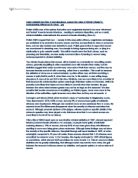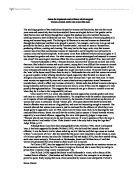The chivalry thesis claims that women will be treated more leniently for committing certain crimes, generally shoplifting is often associated more with females than males, but the statistics suggest that males commit many more acts of theft than women, an
Using material from Item A and elsewhere, assess the value of ‘chivalry thesis ‘in understanding differences in crime. gfg
Pollak (1950) was of the opinion that police and magistrates tended to be more ‘chivalrous’ and ‘lenient’ towards female offenders, resulting in sentence disparities, and as a result, criminal statistics underestimate the amount of female offending. (Item A).
Pollak (1961) argued that men – namely in this case police officers, magistrates and judges, are socialised to be protective towards women and thus are less likely to chare or prosecute them, and are also treated more leniently in court. Pollak goes further to argue that women are accustomed to deceiving men, for example in faking orgasms during sex, or lying in a relationship to gain material wealth. This skill in deceit mean that their crimes, such as poisoning and infanticide, are less easily uncovered (item A) leading to women being underrepresented in criminal statistics.
The chivalry thesis claims that women will be treated more leniently for committing certain crimes, generally shoplifting is often associated more with females than males, but the statistics suggest that males commit many more acts of theft than women, and this may be because females are let off with a warning rather than a conviction. This could be because the statistics of crime are so male dominated, a police officer may not think convicting a woman of petty theft is worth it, when there may be, in his opinion, a man selling drugs elsewhere, it may not be worth it in his view. Similarly, men are more likely to be convicted of theft because the criminal justice system seemingly victimises males over females, while it is probably more likely that males are more likely to commit crime than females, the gap between the crime rates between gender may not be as large as first assumed. It is also possible that female occurrences of shoplifting, as Pollak argues, never even come to the attention of the authorities, again because more often than not they are not reported.

This is a preview of the whole essay
Teacher Reviews
Here's what a teacher thought of this essay
Overall this is a really strong essay. The content never drifts from the focus of the question, there is a good even debate on both sides of the discussion and the use of the item has been applied well. The studies applied are also very effective and support the evidence throughout. At times there is opportunity to apply key terms such as iceberg theory or the hidden figure of crime.








